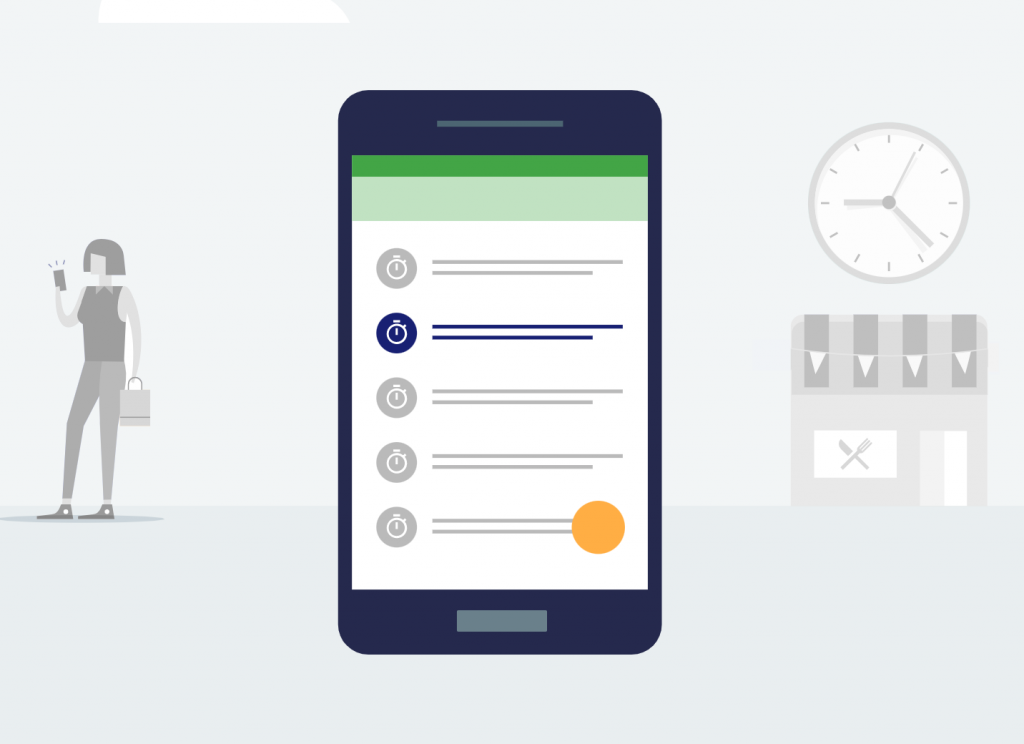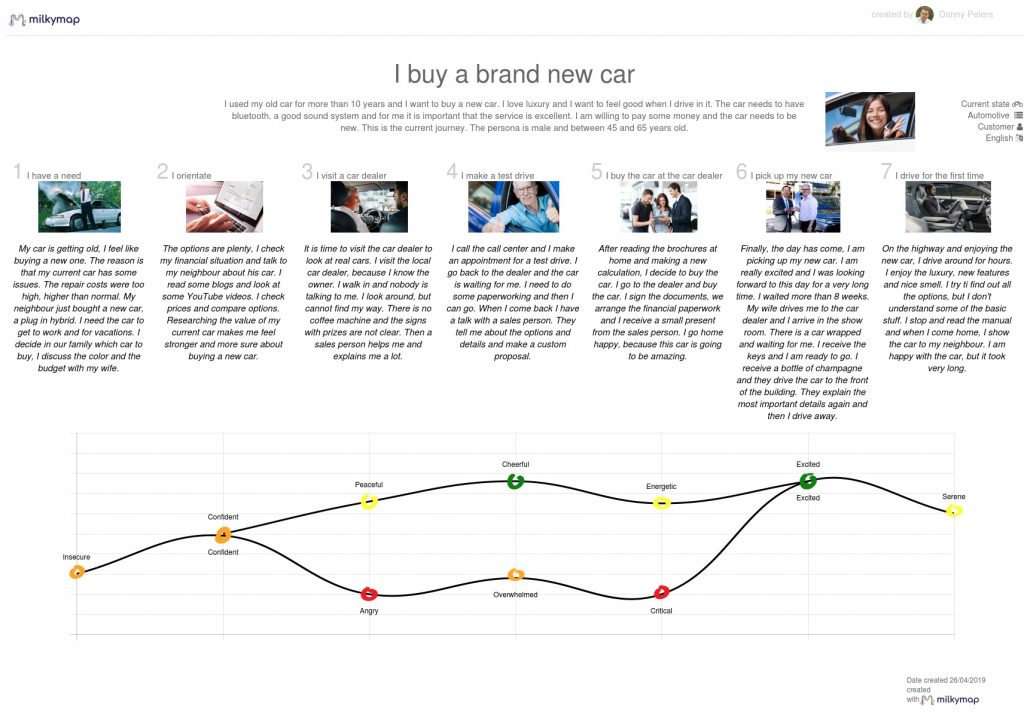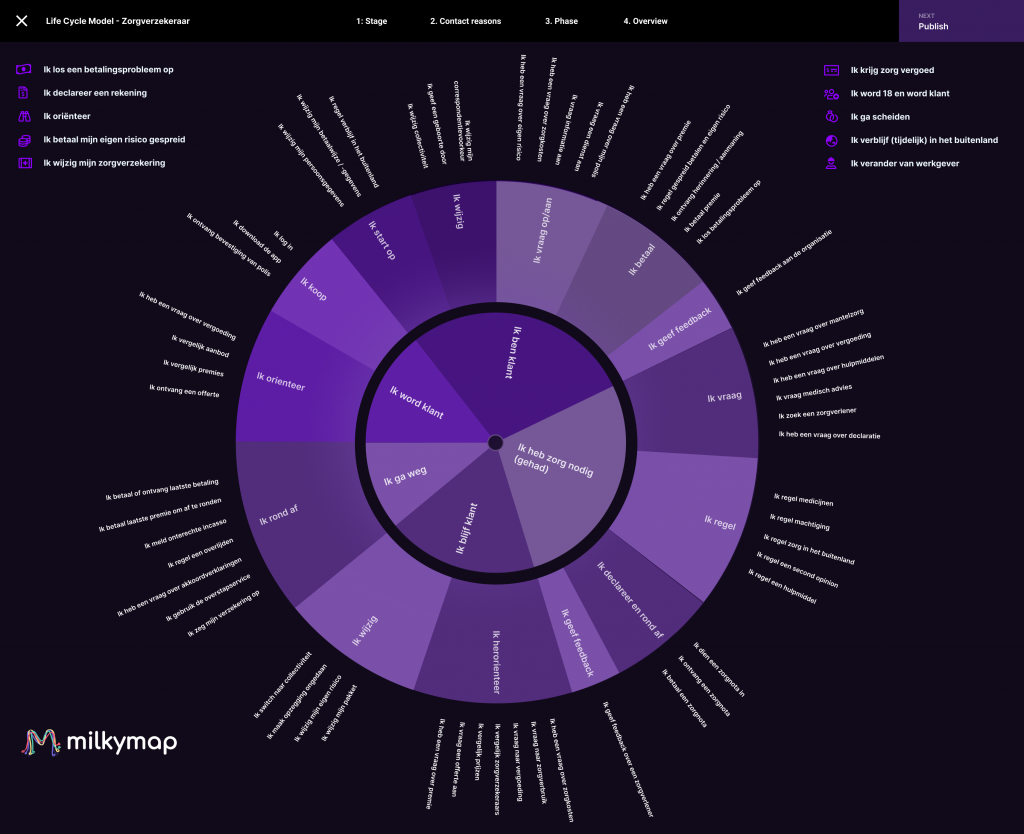A strong Customer Experience can provide a lot of added value for your organisation. By including emotions the right way, for example, experiences become more memorable for your customers. Therefore your brand can become more memorable through these experiences as well. In addition to the emotional benefits, you can also create a business case for Customer Experience based on numbers and statistics. But in order to reach the point where you can build your business case or tackle customer’s emotions, you’ll first need to gain Customer Experience insights. But how exactly do you map Customer Experience? In this post, we’ll discuss mapping CX at three different levels.
Level 3 – Touchpoints
We’ll start with Customer Experience mapping at the micro-level: by using Touchpoints.
Touchpoints are all moments in which a customer is in touch with a brand or organisation. These can be both direct and indirect. Direct Touchpoints are easily controlled by an organisation, like an owned website, social media channel, or a podcast. It can be more difficult, if not impossible, to control indirect Touchpoints. A few examples of these are reviews on independent websites, blogs, and customer comments on social media.
The combination of Touchpoints shapes the experience a customer has with your brand or organisation and all Touchpoints influence the opinion a customer has of your brand or organisation. This influence can be positive, negative, or neutral.
Touchpoints are more specific than channels. In the channel ‘store’, a customer can have the following Touchpoints:
– I read a brochure because I require more information
– I speak to an employee because I have questions regarding the information provided
– I negotiate with an account manager because I want to get a better deal
– I sign the contract because I want to receive the service
– I receive an information package before I leave the store because I want to review the information later
– I check out the product in the store because I want to see the quality in real-life.
You might have noticed that all Touchpoints are phrased in a similar way. You make sure to always think from a customer’s perspective, that’s why you never include internal processes that don’t involve customers in a Customer Journey Map. Our rule for creating uniform Touchpoints: I [active verb] [channel] because / to [Contact Reason]. For example: I visit the store’s website because I need their address for my GPS.
By mapping these micro-moments at level 3, it becomes possible to continuously improve the Customer Experience. Especially direct Touchpoints are influenced relatively easily, in a way that leads to positive noticeable changes for your customer.

Level 2 – Customer Journey Mapping
The second level for mapping Customer Experience is by using Customer Journeys.
By creating a Customer Journey Map you can provide insights into a specific Customer Journey. A Customer Journey consists of different episodes, like chapters in a book. Similar to book chapters, Episodes have a specific order in which the story of a Customer Journey can be told. Within each Episode, you can map different Touchpoints, providing insights into the micro-moments that make up these chapters.
Examples of Episodes are:
– Inform, buy, use
– Searching for information, contacting the organisation, filling out a form, receiving a confirmation, using a service, speaking to an employee, canceling service
– Travelling to the store, looking at products, trying out the product, buying a product, using a product, repair of the product, purchasing another product
– Receiving information, signing the contract, using the service, paying the invoice
– Booking a trip, preparing for a trip, traveling to the airport, check-in, boarding, flying, arriving
– Getting hired, training, performing tasks, personal and professional development, leaving the organisation
Within the Episodes, you can define the emotions, channels, and intentions of your customers. This will help you understand their journey and will allow you to communicate it better to different stakeholders within your organisation.
Level 2 is mostly meant for storytelling and process optimization.
In this article, you can read more about our method for Customer Journey Mapping.

Level 1 – Customer Life Cycle
The highest, macro-level to map Customer Experience is by utilizing a Customer Life Cycle.
A Customer Life Cycle contains all Stages a customer goes through in a complete lifecycle with an organisation. The lifecycle of a customer has a beginning and an ending, starting at ‘I have a need’ and ending with ‘I’ll stay forever / I leave as a customer’. A few examples of Customer Life Cycle Stages:
• I have a need
Something occurs in my life that makes me realize I have a need. Or I notice my friends and/or family using a product I’d like to use as well. It’s a product or service I don’t currently have, or it turns out my current product or service is inadequate in some way, it’s too expensive for example.
• I orientate
I’m looking at different options, using different channels. Price is becoming less important, I’m also looking at the experience. I also take advice into account, from different people within my own network for example.
• I become a customer
I decide to purchase the product, start the service, or get a subscription. Everything is a first for me with this organisation. The brand values are either clearly visible or aren’t very clear to me. This is the moment it needs to happen, this is where I decide if what I am paying is worth it.
• I am a customer
After the first period, usually after a contract period or after paying for a second time, I decide to stay as a customer. It likely means the first period was good enough.
• I remain a customer
I experience that this organisation is a good fit for me. I decide to stay again and renew. I am used to the way they deliver service, I know what the product consists of and how they handle it if anything goes wrong. I intend to stay.
• I am loyal
I’ll stay with this organisation. I won’t leave suddenly, because I am accustomed to the organisation. They have their place in my life, but not yet in my heart. I accept the small mistakes they make. I find the balance between price, quality, and speed alright. This relationship fits and I’m happy to stay.
• I stay forever / I leave as a customer
Stay: I love this company. I’m proud to be a customer and want to remain one until I’m old. I frequently tell people around me about the organisation.
Leave: something occurred that made me decide to leave. This could be price, quality, or speed for example.
Level 1 is most suitable for strategy development and data visualization in a dashboard.
A Customer Journey Map (level 2) is a more detailed visualization of a specific point or specific points in the Customer Life Cycle. For example: within the Life Cycle Stage ‘I become a customer’ the points I download the app and I log in play an important role. In the Customer Journey Map ‘I become a Customer’ there are multiple Episodes, like signing the contract, receiving confirmation, logging in for the first time, and paying the invoice. A Customer Journey Map can surpass different Life Cycle Stages and Phases. There is a Dutch example of a Customer Life Cycle Model below.

From these three levels, you can select one that matches your needs or combine multiple levels of Customer Experience mapping that suit you and your organisation. Use the Life Cycle level for an overview, to develop strategy, and for visualizing data. A Customer Journey Map lends itself for storytelling and allows you to review processes from a customer’s perspective. For more detail and a way to improve specific micro-moments, you can use the Touchpoints in level 1.
In order to improve Customer Experience, it’s essential to gain insights at different levels. By mapping, visualizing, and communicating CX you will be able to gain these insights and share them with your organisation. This will allow you to noticeably add value for your customers. For any help, more information, a demo, examples of Customer Journey maps, or a simple cup of coffee: get in touch.
